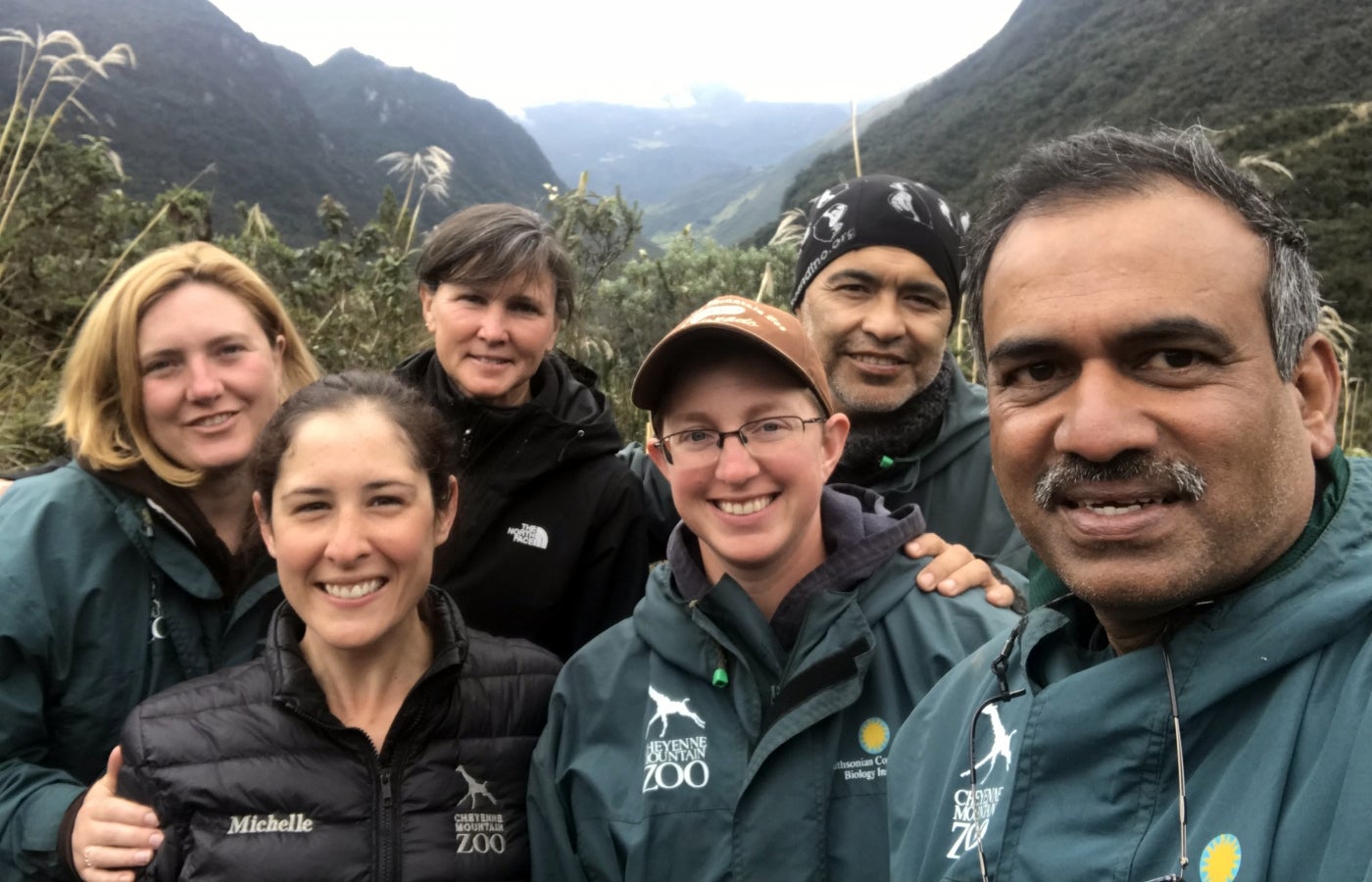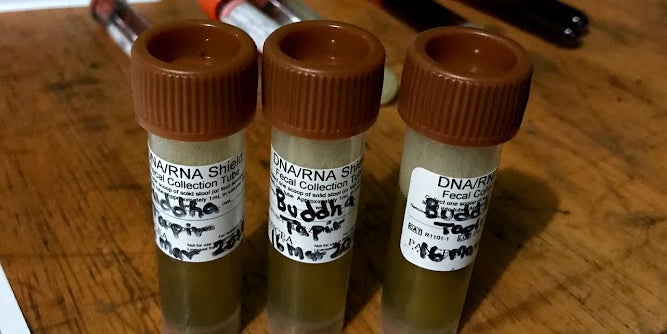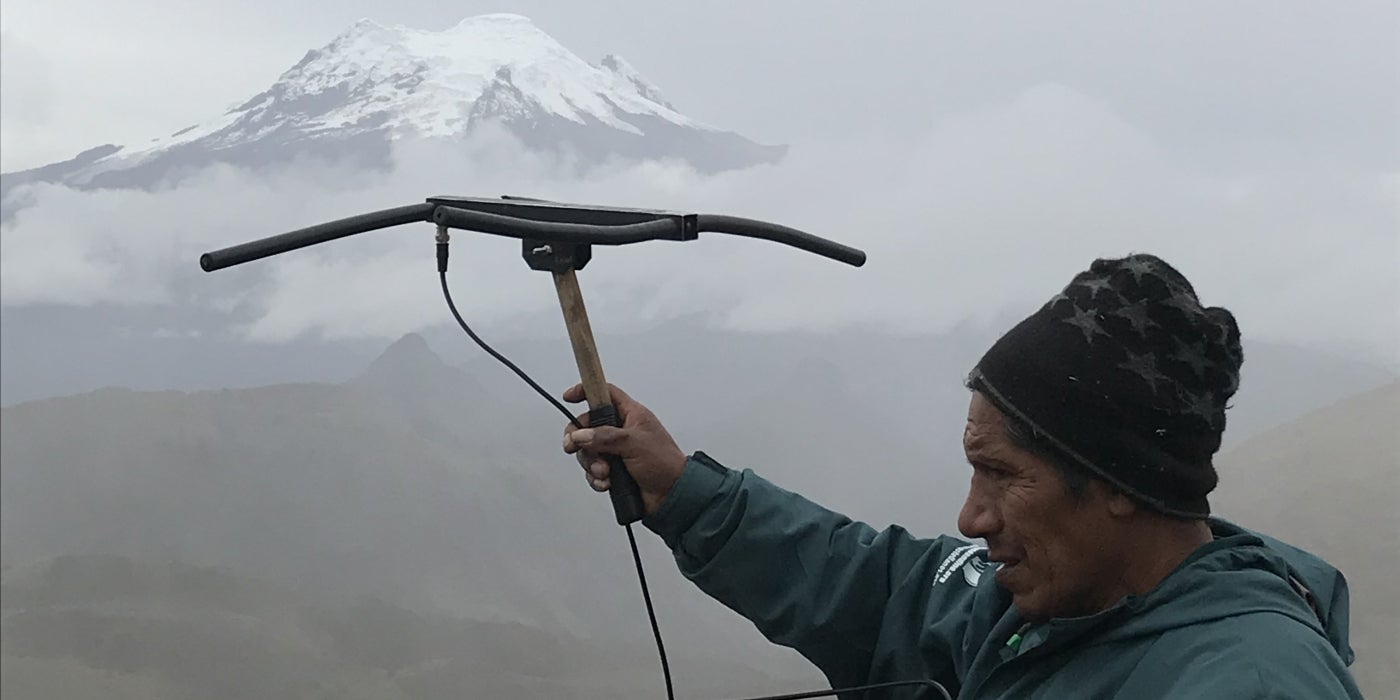Tracking Tapirs: An Expedition in Ecuador
Why is this mountain tapir wearing a collar? His movements and behaviors are being tracked via satellite! This information helps Smithsonian Conservation Biology Institute scientists study the elusive animal’s biology and find solutions to help animals and people coexist in their native habitat. Get the scoop on tapir research from reproductive physiologist Budhan Pukazhenthi, veterinary technician Lisa Ware and ecologist Jared Stabach.
PHOTO: When animals are anesthetized, veterinarians cover their eyes to minimize visual stimulation. In this picture, veterinary technician Lisa Ware is administering fluids to help ensure a smooth recovery from anesthesia.What are your favorite facts about mountain tapirs?
Pukazhenthi: Tapirs are very charismatic, yet not many people know much about these species. Evolutionarily, tapirs represent a unique taxonomic group; they have retained most of their prehistoric anatomical traits. They are well adapted to climbing steep slopes efficiently, since they live at such high altitudes — between 3,200 meters and 4,300 meters above sea level. Their babies are absolutely cute and sport a brown and white watermelon-like pattern when they are young.
What role do tapirs play in their ecosystem?
Pukazhenthi: Tapirs are called the “gardeners of the forest.” As such, they are extremely important for maintaining forest biodiversity. Their diet consists primarily of fruits and leaves. As the seeds pass through their digestive tract, they are dispersed throughout the habitat. If tapir populations were to decline further, we would see a very different forest over the next several decades.

What threats do they face in the wild?
Pukazhenthi: Of all four tapir species, mountain tapirs are the most endangered. Fewer than 2,500 animals remain in their native range (Colombia, Ecuador and Peru), so it is critical that we learn all we can about this species’ behavior, biology and ecology now.
Collecting this data will enable us to draft a conservation action plan for mountain tapirs in Ecuador and will give us the best chance at saving them from the threats they face, including climate change, habitat destruction, illegal hunting and potential disease transmission from livestock.
How can tracking tapirs help scientists conserve them?
Pukazhenthi: In order to protect the species, we first need to know where the animals are going and how much space they use (home range). Satellite data can help policy makers understand how tapirs use their habitats — how large their range is, which forest corridors they use and where they breed and raise their young.
It also allows us to pinpoint areas that are not ideal habitat for one reason or another. For example, are there roads where collisions between tapirs and vehicles occur? Are there grazing areas that overlap where disease is likely to spread between tapirs and livestock? Knowing more about tapir population dynamics can help local governments ensure their survival.

How do you choose which tapirs to collar?
Pukazhenthi: Ideally, we would like to collar animals that would help us answer the various questions mentioned earlier. Our current goal is to collar between 10 and 15 adult mountain tapirs, both males and females. But, in all honesty, we collar whomever we can. Since so little is known, every animal provides us with a new and important information about the species.
What can you learn from doing health assessments?
Ware: There is very little information available about the health status of wild mountain tapirs, in part because they are so difficult to track and anesthetize for the collection of samples. Once we locate and anesthetize an animal, we implant a transponder chip so we can identify them permanently. We also collect various biological samples including blood, serum, feces and any ectoparasites, such as ticks.
The biological samples we collect provide us with a baseline picture of the tapir’s general health status and parasite burden. We can also gain a better sense of the tapir’s exposure to diseases. As domestic cattle and horses encroach higher and further into the mountain forests, the potential for novel disease to spread to the tapirs increases. Some of these diseases could have devastating effects. Having a baseline is important to help track disease exposure and spread. This information is crucial for helping wildlife managers make decisions that could help protect the tapirs.
Pukazhenthi: We also conduct reproductive assessments on all animals. Ultrasound exams enable us to diagnose pregnancy in female tapirs. We also plan to collect semen from adult males to assess sperm quality and develop cryopreservation technologies for establishing a bank of frozen sperm.
How do the GPS collars work?
Stabach: GPS satellite collars work the same way that GPS navigation works in your car. It calculates how long it takes signals — traveling at the speed of light from a system of orbiting satellites — to be intercepted by a receiving unit. But, instead of your dashboard, the tracking device is incorporated into a collar that fits around the tapir’s neck. These particular collars weigh about 1 kilogram (2.2 pounds), which is less than 1 percent of the tapir’s body weight.
The collars we are deploying can provide data for 18 to 24 months. All collars are programed to automatically drop off after 2 years. At that point, we will return to the field and recover the collars.

What can you learn from the collar data?
Stabach: In addition to position, the collars also collect ambient temperature and are equipped with a tri-axial accelerometer, providing detailed information on the animals’ movements in the x, y, and z-axes. In the animal movement world, we refer to these axes as surge (front to back), sway (left to right) and heave (up and down), which helps us to infer what the animals is doing over time. This includes how much time the animal spends feeding, sleeping or moving.
To estimate a 3-dimensional position, at least four satellites are needed to precisely determine the position of the collar and, therefore, the animal. In densely forested regions like Ecuador, the positional accuracy is between 2 and 10 meters.
How do tapirs interact with their habitat?
Stabach: While we can infer some of the behaviors that tapirs are doing, the collar does not specifically collect this type of information. These are all activities that we can deduce after we receive the data from the collars. We often extract the pixel value from where the animal is located. This pixel value could represent how far the animal is located from the nearest village, road or river. Or, the pixel could represent the vegetation quality in the region.
By analyzing the accelerometer included with the collar, we can start to infer behavior, but we also need detailed training data to understand what the values we receive mean. This is a strength of having animals at the Smithsonian’s National Zoo and Conservation Biology Institute in Washington, D.C., and Front Royal, Virginia, since we can easily observe animals in a safe environment.

How often do they transmit data?
Stabach: We set the GPS collars to turn on and off at defined intervals to help save battery life. We collect positions every two or four hours, 365 days a year. The positions are transmitted via Iridium satellites, which provide data transmission coverage to satellite phones and other handheld devices. For a collar that has been programed to collect positions every two hours, we receive one transmission daily with 12 data packages. This enables us to see the tapir’s precise geographic location in near real-time.
What excites you about this research?
Pukazhenthi: There are only nine mountain tapirs in human care globally — two at Cheyenne Mountain Zoo in Colorado, five at the Los Angeles Zoo in California and two in Colombia. I have been conducting reproductive assessments on all four species of tapirs for more than a decade. The more I work with them, the more I want to learn about them.
Since there are so few opportunities to study mountain tapirs in zoos, there is very limited information about their reproductive biology, health and ecology. I look forward to the opportunity to work with colleagues to develop assisted breeding technologies for improved genetic management. This study presents a great opportunity for us to build our collective knowledge about what these animals need to survive and thrive, both in the wild and in human care.
This story appears in the July 2019 issue of National Zoo News. Additional collaborators in this study include Dr. Liza Dadone, Director of Conservation and Medicine, Cheyenne Mountain Zoo; Dr. Armando Castellanos, President, Andean Bear Foundation; and Dr. Jorge Brito, Institute for Biological Diversity (INABiO), Ecuador.
